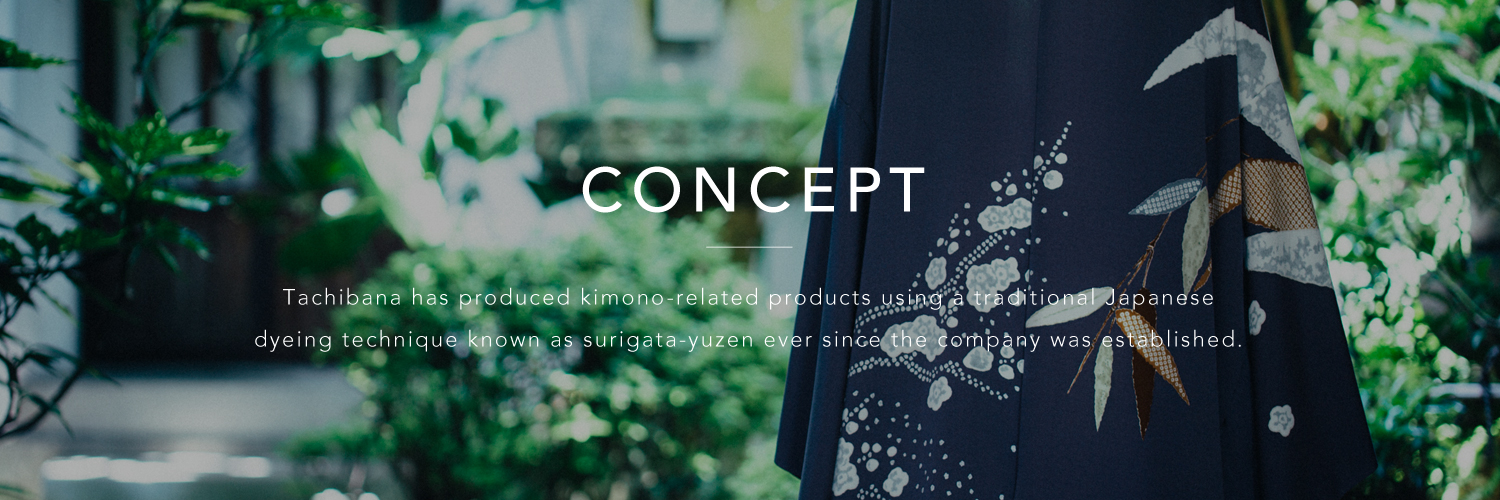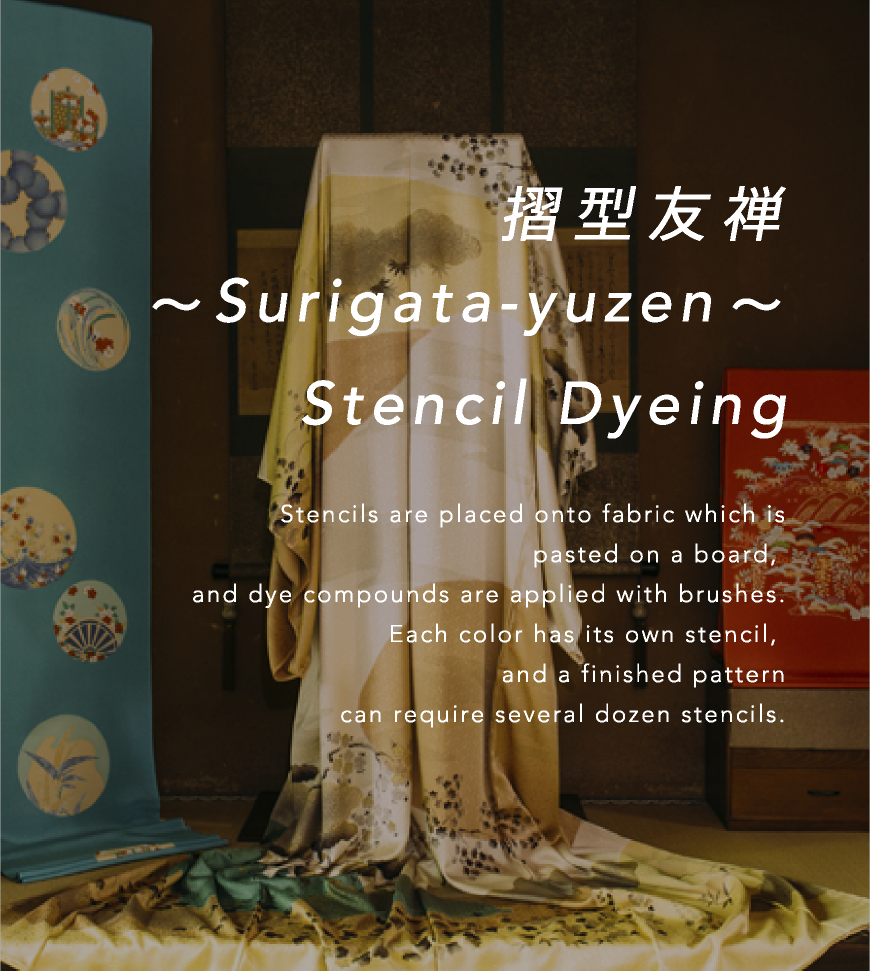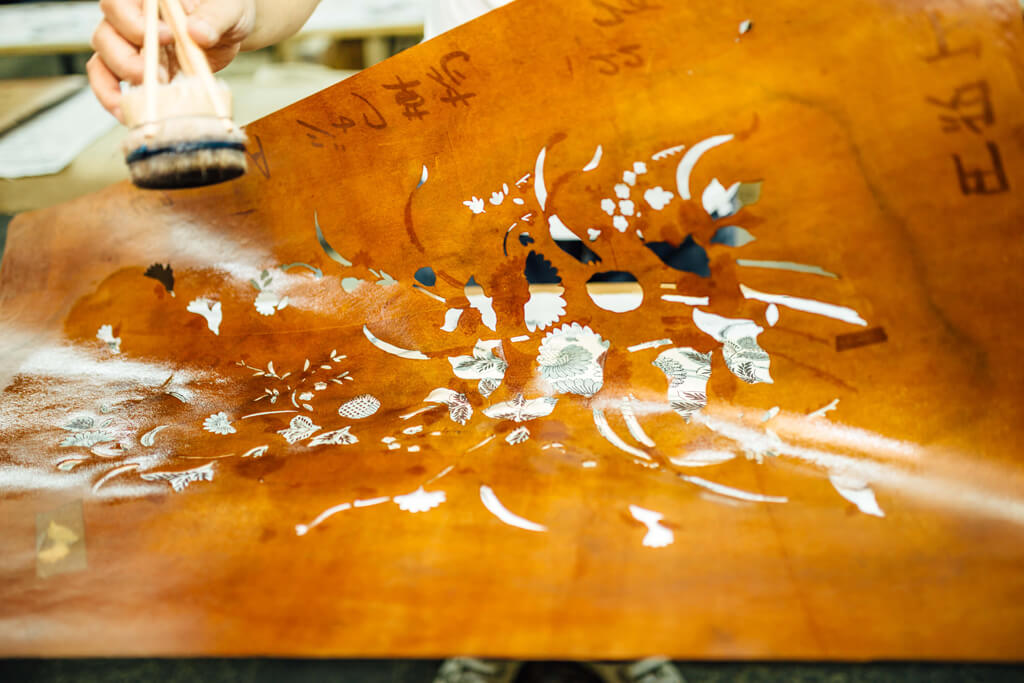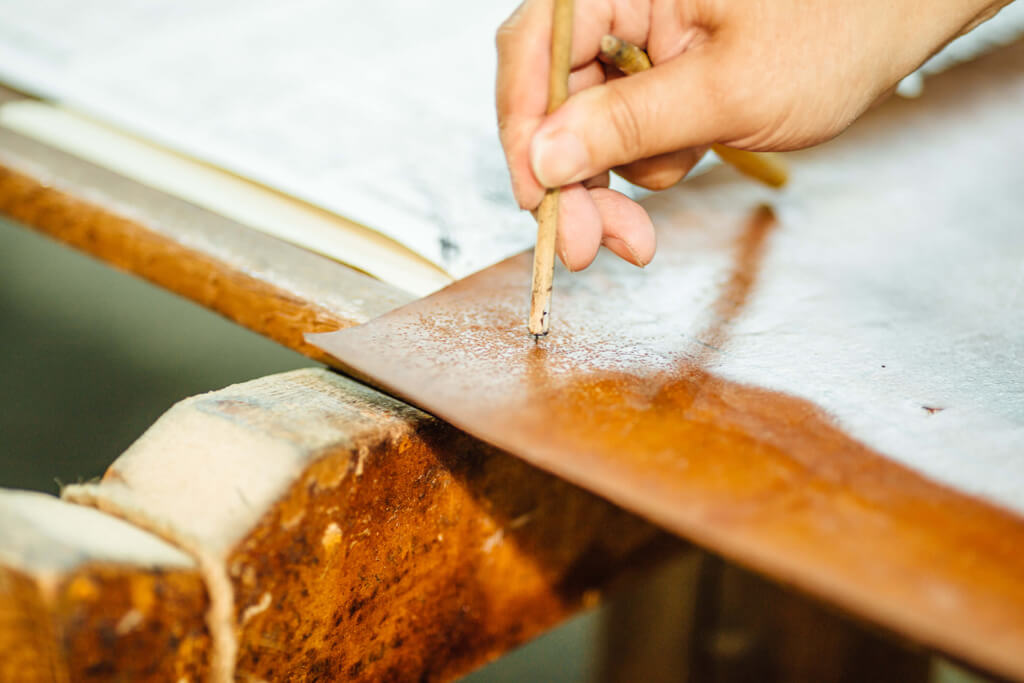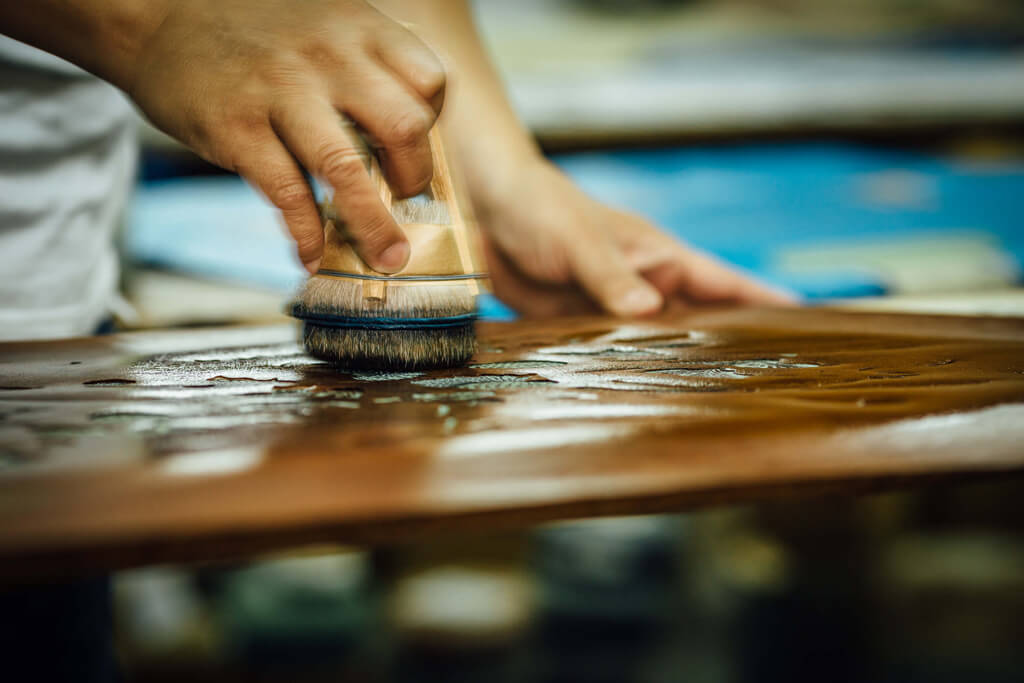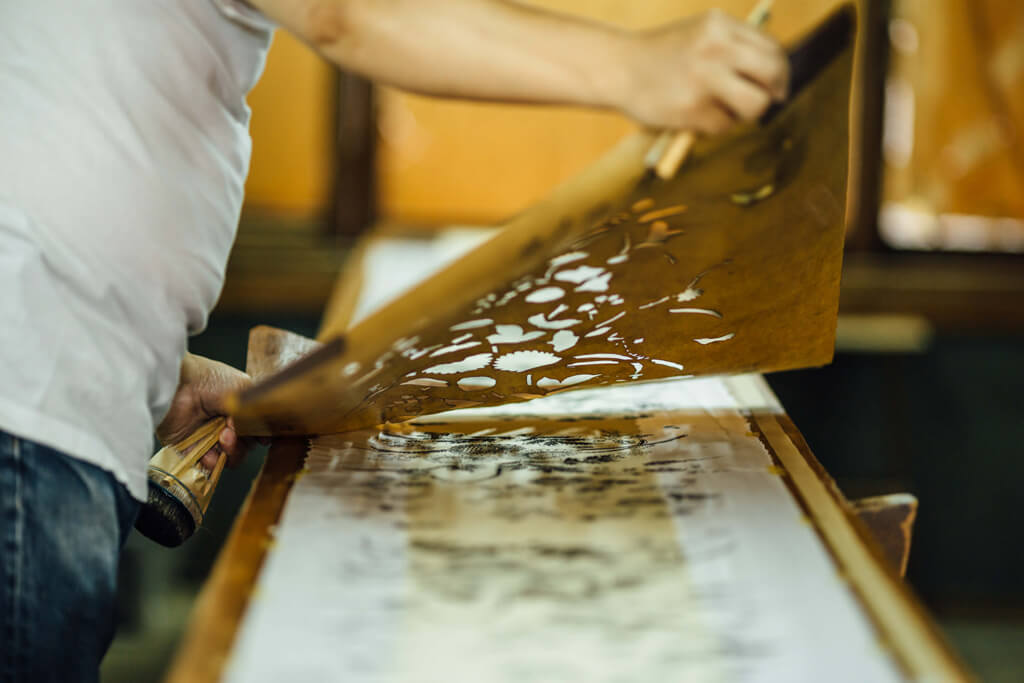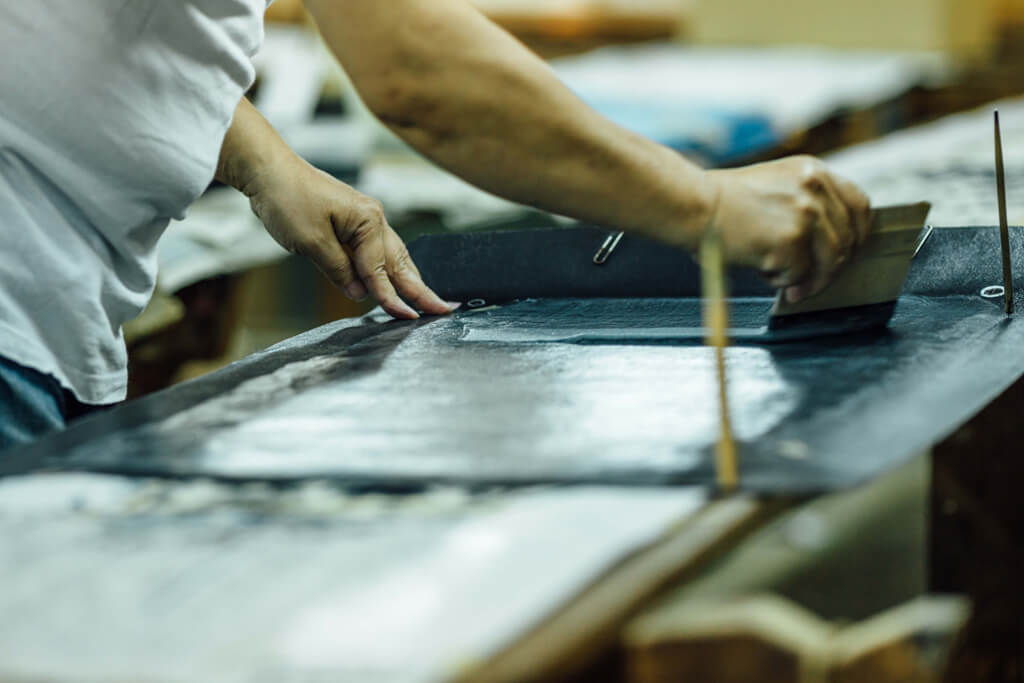
Concept
Tachibana has produced kimono-related products using a traditional Japanese dyeing technique known as surigata-yuzen ever since the company was established.
Although Japan has become a globally prominent country, the kimono has not earned the same popularity. We created our original bow-ties because we would like people all over the world to use kimono goods in their everyday lives.
